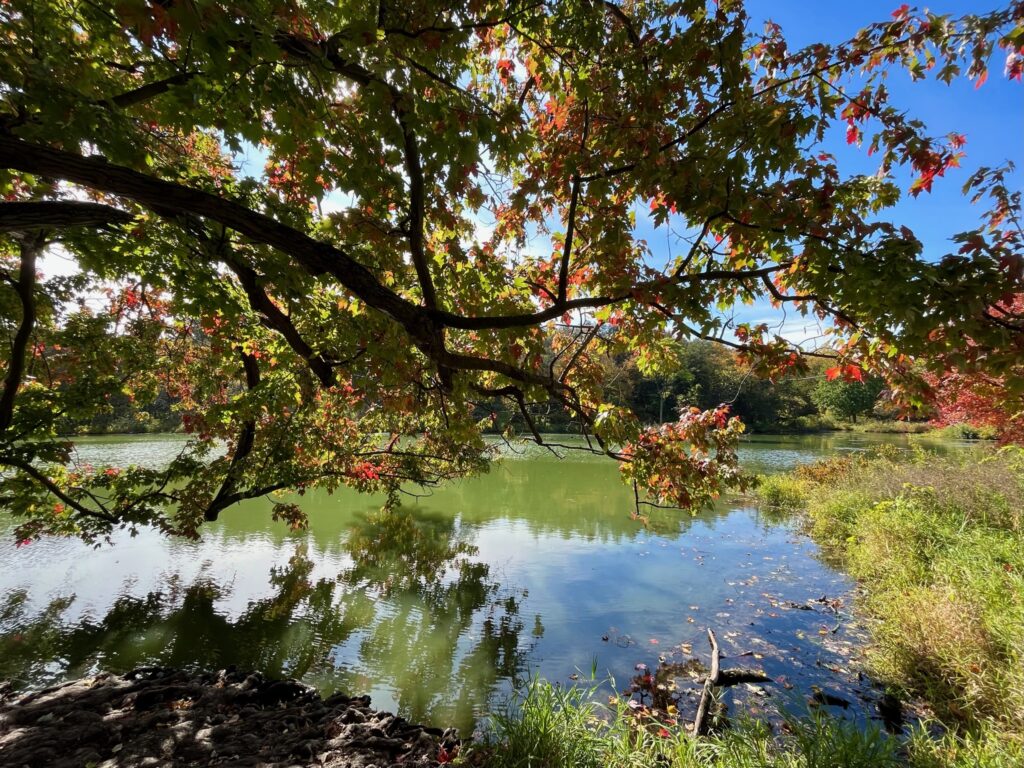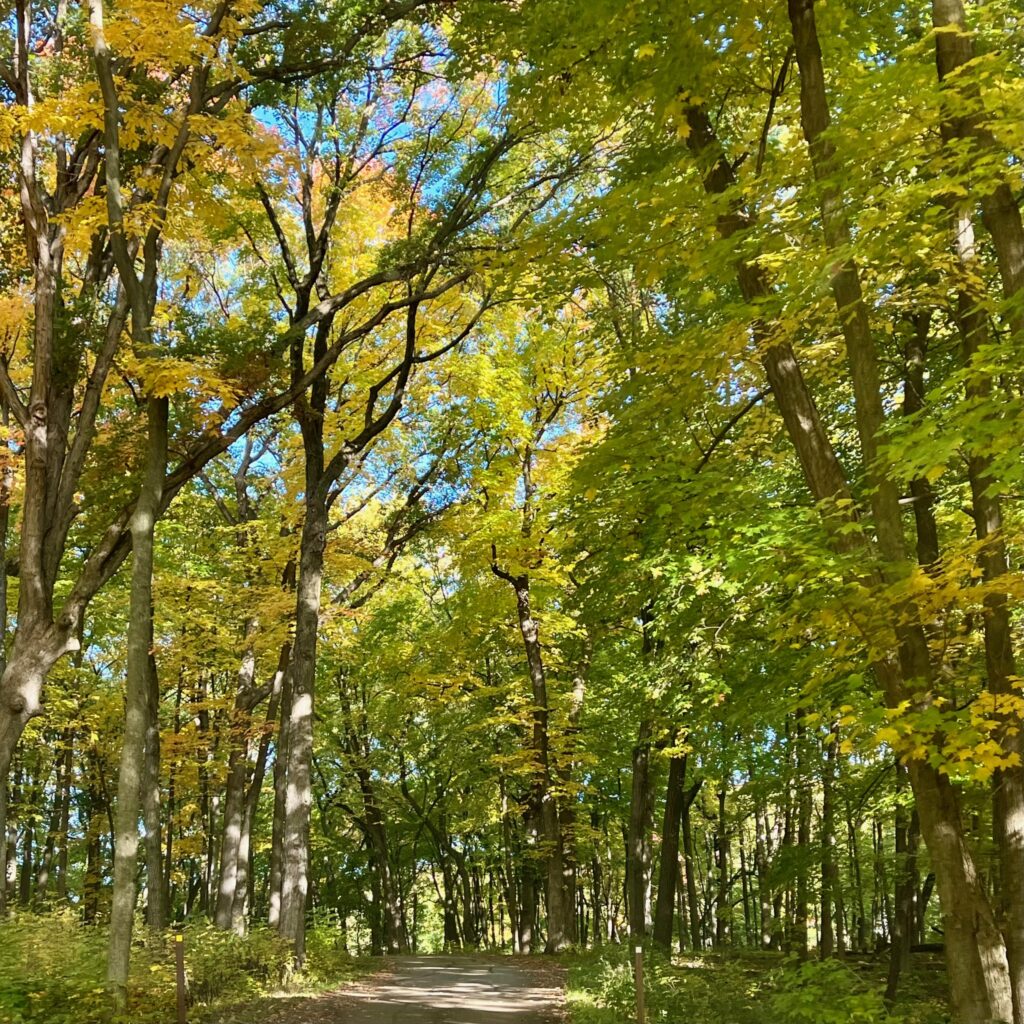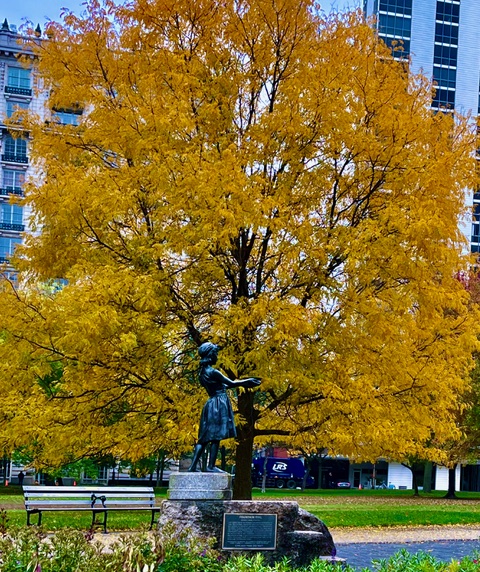By Michael Traynor

From 1907 through 1993, the Chicago Tribune annually published John T. McCutcheon’s evocative cartoon above. The cartoon illustrates how the autumnal season summons a sense of awe in the young, and in the young of heart. John’s accompanying text to his cartoon was a product of the racially intolerant time in which John lived, and so its annual publication in the Tribune was judiciously retired in 1993. Now 30 years later, the drawings retain the power to connect us with some solemn and sacred autumnal reflections. When Autumn beckons Winter, this sentiment of this liminal space has been integral to the human experience in northern regions for thousands of years.


The childhood memories of many a Chicagoan’s autumn were marked by this cartoon’s annual October publication. I remember my dad showing this to me each year as a youngster. It gave me goosebumps. Like the little boy in the cartoon, I was connecting at an early age, from a trusted elder, about the sacredness of this time of year. My guess is many readers here feel a similar nostalgia, The drawing itself connects us to the haunting beauty of a late autumn day. That sense of wonder is more directly available to us whenever taking a stroll through natural settings A good place to experience this wonder is by taking a stroll in our local parks.


The Druid priests of the ancient Celts celebrated this time as “Samhain” (pronounced Sow-In). Samhain marks that liminal space between harvest and winter — falling In the middling period between the autumnal equinox and winter solstice. It was celebrated in some fashion across all Northern Europe. Wikipedia points to evidence of the season’s celebration as far back as the Neolithic. The Chicago Tribune, being a hard-nosed Midwestern newspaper, required the season be precisely identified for publication. The Tribune decided Samhain would be observed In October, and in Northern Indiana (This being McCutcheon’s inspiration). Whenever you decide to observe Samhain, be assured that at that time, doorways will open. The doors lead from the Nether World into the land of the living. Through these doors emerge the souls and spirits of the dead, ready to dance, to play, and to dwell among us.


It is not hard to see how so many of our modern traditions of this time evolved from their Neolithic Celtic roots. The sacredness of our connection to all who came before us is expressed in the solemnities of All Souls and of All Saints days in Christian traditions. The more secular traditions emphasize the frightening return of the dead, expressed worldwide through Halloween. The “Dia de los Muertos” in Hispanic cultures may be the most exuberant secular spectacle and sacred observance all in one. Wiccans the world over celebrate this time as evidence of the eternal cycle of birth and rebirth, as days of light yield to darker days ahead.

I like to think that whatever modern ways we choose to celebrate, they all let us recognize the common spiritual path we are on together, and our essential participation in the journey. Each of us are part spiritual beings, and each destined to become fully spiritual with time. In that sense, we are celebrating ourselves.

Observe the boy in the cartoon above. He is being emotionally introduced to the sacred and secular wonders of this season. Do you think the young boy in the drawings sees the spirits of the dead all around him? Does he experience the wonder? Do YOU? Below are some photos of our parks right now. Test your ability to see the spirits dancing within.

I hope you can see the spirits circling this season. I hope you feel your participation in the dance. Be open minded about the possibility as you stroll through our local parks. Yes? I knew you could see them!
Let John McCutcheon offer these final words, just as he first wrote them in 1907: “But every year, ‘long about now, they all come back, leastways their sperrits do. They’re here now. You can see ’em off across the fields. Look real hard. See that kind o’ hazy misty look out yonder? Well, that’s them…”







